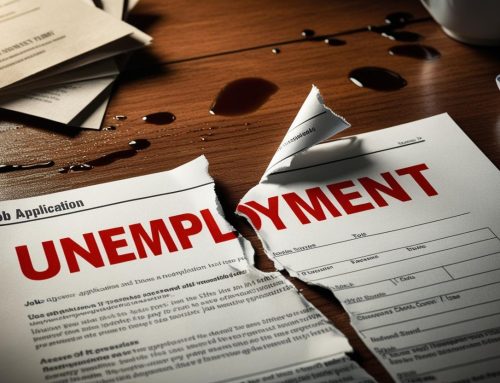UniCredit Bank Austria Business Indicator
Prospect of economic recovery in the course of 2025, but risks have increased
- The UniCredit Bank Austria Business Indicator deteriorated slightly to minus 2.5 points in October
- Sentiment in the services sector deteriorated again, but pessimism in industry and construction declined somewhat
- No end in sight to the economic downturn for the time being: GDP still expected to fall by 0.5 per cent in 2024
- Continued monetary easing and the unwinding of the consumer backlog following sustained gains in purchasing power should enable moderate economic growth of around 1 per cent in 2025
- Forecast risk predominantly on the downside, as increased protectionism in foreign trade could limit global support for the recovery of the domestic economy
- Unemployment rate expected to rise to 7.2 per cent in 2025, after 7.0 per cent in 2024
- Weak economy dampens inflation to an average of 2.9 per cent in 2024, inflation expectation of 2.2 per cent in 2025, despite slight upward pressure at the start of the year
- Next ECB interest rate cut expected in December

Economic sentiment in Austria showed no clear direction in autumn, with slight fluctuations in the pessimistic range. “Following the slight improvement in the two previous months, the UniCredit Bank Austria Business Indicator fell again slightly to minus 2.5 points in October. With the decline to the weakest value since July, the indicator continues to signal a continuation of the sluggish economy in Austria”, says UniCredit Bank Austria Chief Economist Stefan Bruckbauer, adding: “The Austrian economy is still not getting off the ground. Despite a slight improvement in sentiment in construction and industry, these sectors remain in recession. Although the service sector is stabilising the economy, it is hardly able to provide any impetus to rev up the economic engine due to the ongoing consumer restraint. We therefore expect the economy to remain weak at least until the end of the year and GDP to fall by 0.5 per cent in 2024 as a whole.”
No signs of an improvement in sentiment in the near future
The reason for the slight decline in the UniCredit Bank Austria Business Indicator in October was the slight deterioration in sentiment in the service sector. The increase in purchasing power due to the ongoing decline in inflation has hardly provided any tailwind for consumption so far. On the contrary, the high level of uncertainty among consumers as a result of the price shock and now also due to increasing concerns about employment have led to an increase in the savings rate. This existing uncertainty is also reflected in the renewed deterioration in domestic consumer sentiment.
Despite a slight improvement, the pessimistic mood in the Austrian economy in autumn continued to be determined primarily by the weakness in the manufacturing sector. There have been signs of economic stabilisation in the construction sector in recent months, albeit at a low level. In industry, the downward trend in production has slowed, but the worsening lack of orders in the metal goods industry, among others, has clouded the outlook.
“At the beginning of the final quarter, the mood in all sectors of the domestic economy was clearly pessimistic, in some cases even significantly below the long-term average. In addition, sentiment in all economic sectors in Austria was worse than in the eurozone. Pessimism continues to be much more pronounced than the European average, particularly in industry, and the current sentiment does not currently indicate an imminent economic turnaround, especially as the export environment deteriorated further in October and protectionist tendencies in global foreign trade are threatening to intensify”, says Bruckbauer.
Moderate growth in 2025 with increased risks
While there are currently no signs of an incipient recovery in the Austrian economy, the improvement in some framework conditions supports the prospect of an economic upturn in the course of 2025. On the one hand, the ongoing decline in inflation coupled with continued high income growth should further strengthen the purchasing power of domestic consumers and gradually revitalise consumption. On the other hand, the further easing of monetary policy through interest rate cuts could encourage entrepreneurs to invest and reduce financing costs.
“We assume that domestic demand, supported by consumption and investment, will give the domestic economy some momentum in 2025 and that the current slump can thus be overcome. However, we expect only a moderate and rather fragile recovery with a one per cent increase in GDP”, says UniCredit Bank Austria economist Walter Pudschedl, adding: “In addition, the forecast risks have increased, as the prospects of support for the Austrian economy from an upturn in global trade have diminished with the ongoing economic problems in China and the political decisions in the USA.”
No signs of a trend reversal on the labour market
The weakness of the Austrian economy continues to have a negative impact on the domestic labour market. The unemployment rate began to rise in spring 2023 and reached a temporary peak of 7.2 per cent in October after seasonal adjustment. Compared to the low point around one and a half years ago, the unemployment rate was therefore exactly one percentage point higher. However, in view of the ongoing economic downturn, particularly in industry and construction, the rise in the unemployment rate has so far been relatively restrained. In 2019, before the outbreak of the coronavirus pandemic, the unemployment rate even averaged 7.4 per cent in a good economic climate. The slower increase in labour supply due to the retirement of the baby boomer generation, lower immigration and the high popularity of part-time work dampened the upward trend in unemployment.
“The situation on the labour market will continue to deteriorate in the coming months, burdened above all by lower staffing requirements in the weakening industrial sector. The momentum in the service sectors will remain too weak to compensate for this for the time being. After an average of 7.0 per cent in 2024, we expect the unemployment rate to rise to 7.2 per cent in 2025”, says Pudschedl.
Inflation shock is over, but challenges remain
Due to the weak economy, inflation in Austria has fallen much faster than originally expected. At an expected 1.8 per cent year-on-year, inflation in October was below the European Central Bank’s target value for the second month in a row. This means that average inflation in the first ten months was 3.2 per cent after high figures at the beginning of the year.
“Inflation in Austria should remain within the ECB’s target range of 2 per cent until the end of the year, dampened by low oil prices. At the start of 2025, inflation is likely to take a small leap upwards due to the expiry of the electricity price brake and inflation-related price adjustments in the tourism sector. However, weakening second-round effects in the services sector and the decreasing pricing power of producers in the weak demand environment should subsequently lead to a stabilisation. After an average of 2.9 per cent in 2024, we expect an inflation rate of 2.2 per cent for the coming year 2025”, says Pudschedl.
Next key interest rate cut expected in December
The weak economic outlook and lower inflation expectations have increased the pressure on the ECB to proceed with interest rate cuts more quickly than originally planned. As a result, the deposit rate was cut again by 25 basis points in October, bringing the total to 75 basis points since June.
“We expect the ECB to cut interest rates by a further 25 basis points in December. For 2025, we anticipate a reduction in key interest rates by a further 100 basis points, whereby the deposit rate could have already reached its final level in the current interest rate cycle at 2 per cent in September”, says Bruckbauer, adding: “The persistently unfavourable economic outlook and the upcoming economic policy changes in the US, particularly with regard to global trade, have even increased the possibility of a reduction in key interest rates below the neutral level of around two per cent – i.e. a slightly expansionary monetary policy course by the ECB.”
Source: UniCredit Austria
Legal Notice: The information in this article is intended for information purposes only. It is not intended for professional information purposes specific to a person or an institution. Every institution has different requirements because of its own circumstances even though they bear a resemblance to each other. Consequently, it is your interest to consult on an expert before taking a decision based on information stated in this article and putting into practice. Neither Karen Audit nor related person or institutions are not responsible for any damages or losses that might occur in consequence of the use of the information in this article by private or formal, real or legal person and institutions.






